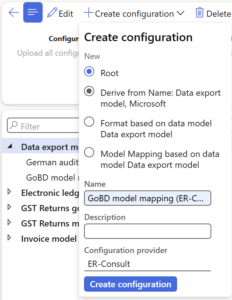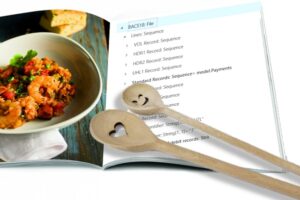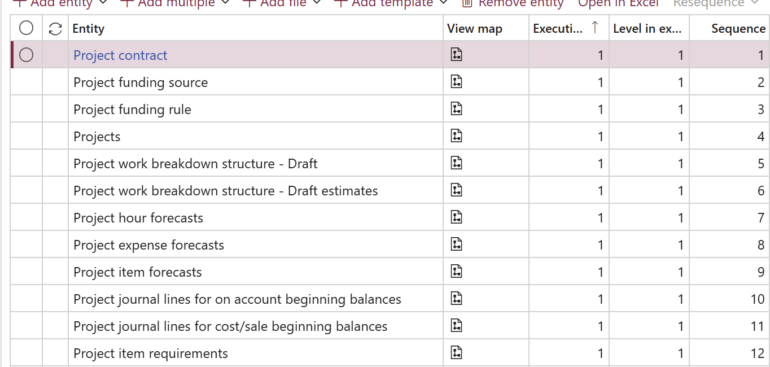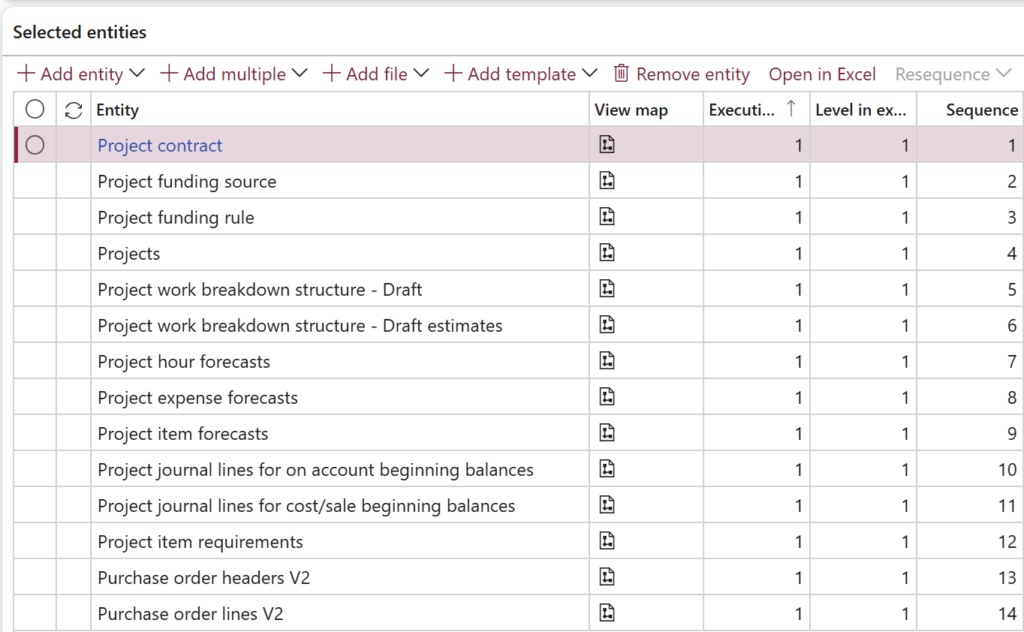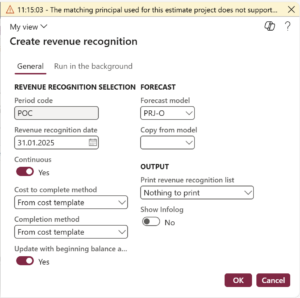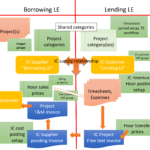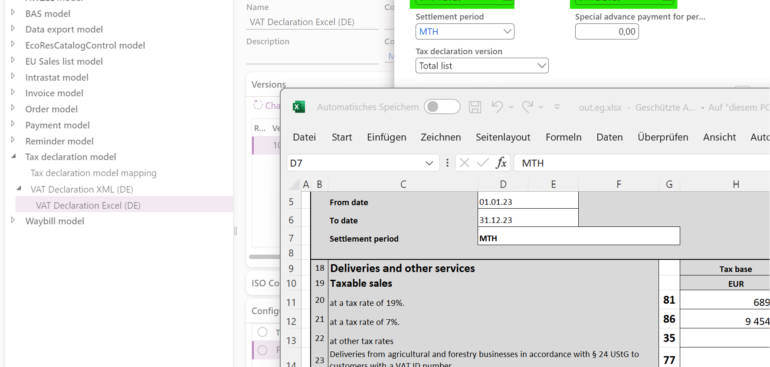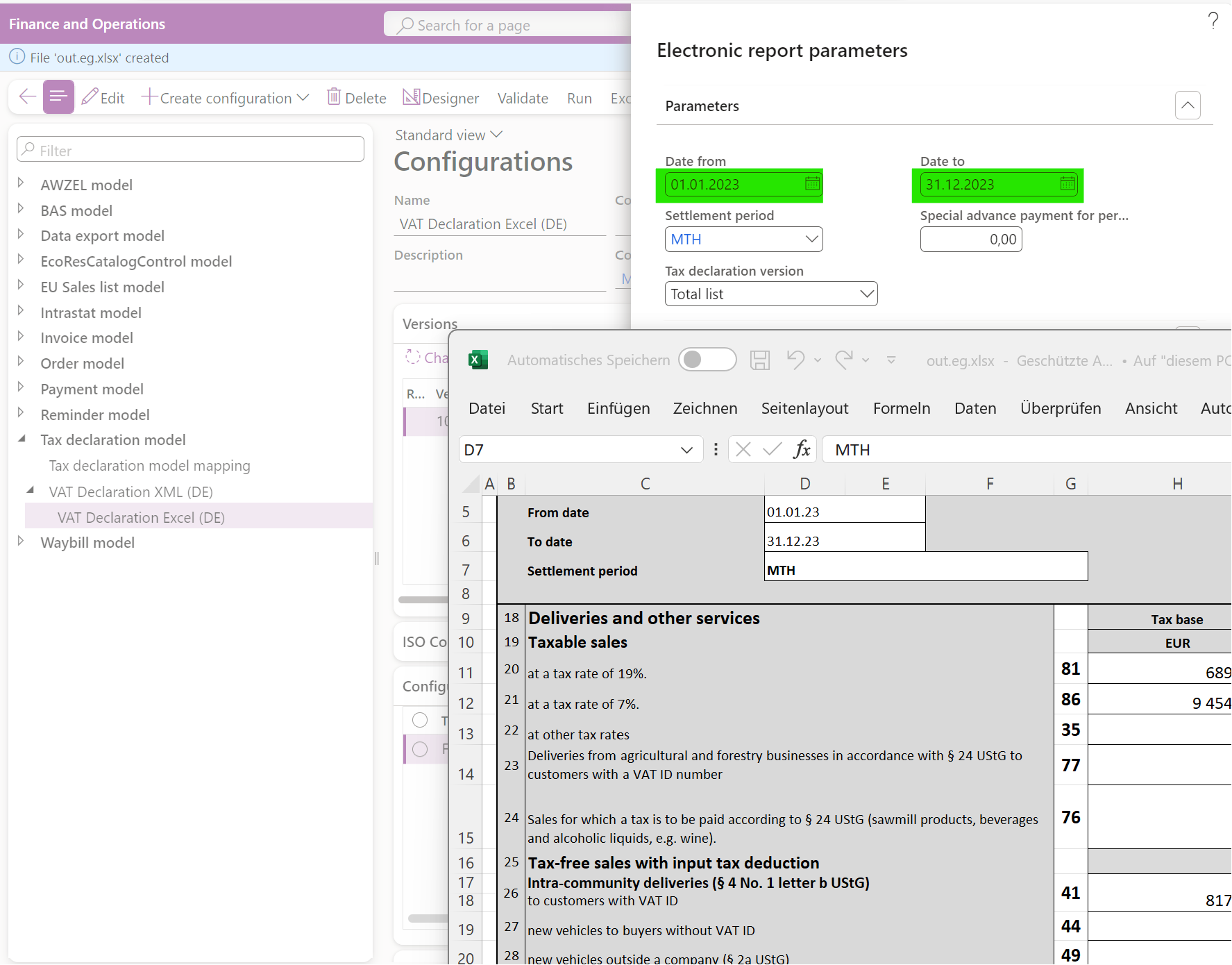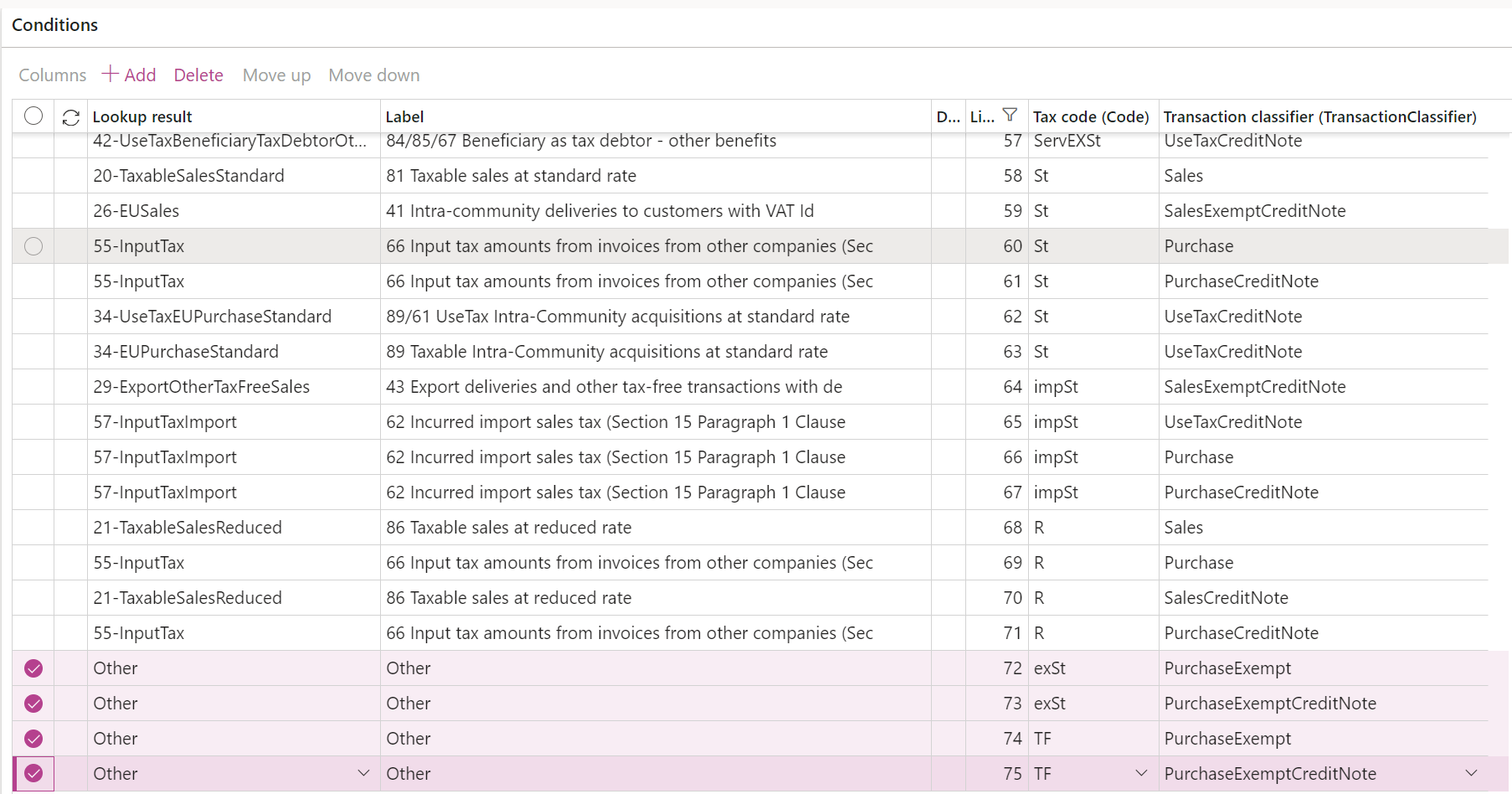
Amend GDPdU = GoBD = FEC
The audit export file in Dynamics 365 for Finance may be easily extended, a power user can do it on his/her own. For example, the auditors often ask for a “system date” or time column in the audit file for their DATEV applications: in a nutshell, they need to know when the invoice was really posted, not only the invoice date.
Here is how to fulfil this requirement:
- Open the Electronic reporting workspace (Organisation administration > Workspaces). Make sure a custom “provider” is selected as “active”. Check here to learn how and why: Electronic Reporting (ER) Cookbook 2: new tips from the kitchen
- Click the Reporting configurations tile and locate the root Data export model node. To amend the French FEC file, select the French FEC model mapping instead.
- Click +Create configuration and select the “Model Mapping based on data model Data export model” option. Namely, the model itself is very abstract in the case of this data export, the interesting stuff is hidden in the model mapping.
- Select the new model mapping in the tree and use the Designer, then click Designer again.
- In the Model mapping designer, look for the odd looking objects like _01xxxx, _02xxxx etc. at the bottom of the Data sources list. These are the “Table metadata” objects. I have a feeling that these artifacts were invented solely for this usage scenario of generic data exports with variable columns. In our case, choose _01Sachkonten, then Edit, then Editor.
- The Table metadata editor has a unique UI. In the leftmost list, select the Sachkontobuchungen table. In the rightmost list, locate the $Entries/$GeneralJournalEntry/createdDateTime node and Add it to the middle list of fields (see the screenshot above). Rename the new field, if necessary.
- That’s it, hit Save, close the table editor, confirm with OK and save the changes in the model mapping designer ultimately.
- In the end, Change status of your custom model mapping to Complete and mark it as the Default for model mapping to inactivate the standard one.
- If you need to format the date-time column in a special way, you’d need to make a format derived from the standard German audit file output, too. In that one, you’d need to modify the Transformation fmtdatatime. You will learn in the blog Electronic Reporting (ER) Cookbook 3: Working with dates how to do it.
- To test your changes, launch General ledger > Periodic tasks > Data export, select the Format mapping (choose your own if you modified it at step 9). Select Table Group = Ledger accounts, choose the dates, launch and verify the output in one of files in the resulting ZIP offered for download:
"130300-001-";2025-02-21;"Period 2";"68721077482";"Benutzung";"Verkauf - Lieferschein-Umsatzerlös, Gegenkonto";"Nein";"Nein";499,96;"EUR";499,96;"";21.02.2025;"SPS-1000165";21.02.2025;"SPK-000166";"Aktuell";"";"";68719785542;"SPK-000166"
"140200-001-";2025-02-21;"Period 2";"68721077479";"Benutzung";"Kosten der gelieferten Einheiten";"Nein";"Ja";-315,50;"EUR";-315,50;"";21.02.2025;"SPS-1000165";21.02.2025;"SPK-000166";"Aktuell";"";"";68719785542;"SPK-000166"
By the way, you may use the parameter Include “Create by” field to comply with another common requirement: export the user ID to prove to the auditor that it is the accountant who makes the ledger transactions, not an IT consultant 😉
Electronic reporting blog series
Further reading:
Customer invoice falsifier for D365 for Finance
Amend GDPdU = GoBD = FEC
Z4-Meldung an Bundesbank
Enumerate lines in Configurable Business Documents
D365 Electronic Reporting: JOIN records in pairs
Electronic Reporting (ER) Cookbook 4: References in a model
Electronic reporting for data migration
Electronic Reporting (ER) Cookbook 3: Working with dates
Electronic Reporting (ER) Cookbook 2: new tips from the kitchen
Electronic Reporting (ER) Cookbook


